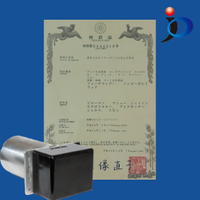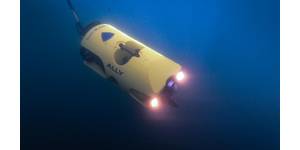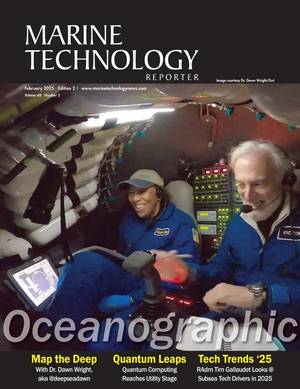FarSounder Receives 8th Patent
issuance of its 8th Patent, number 11,609,316. This US patent expands the company’s patent portfolio for its unique sonar system and its 3D processing.The invention provides a sonar system that includes a forward-looking sonar device that operates in an integrated fashion with one or more other sonar devices so that a boater can have a reliable navigation tool. The forward looking sonar can include a transducer array that takes a three-dimensional acoustic reading of the objects and seafloor ahead. The electronics that process the acoustic data can also process data from down-looking sonar, side-scanning

Unmanned Vessels Help to Protect Threatened Marine Lives in China
Chinensis, is renowned as the "panda of the ocean." It was classed as "vulnerable" on the IUCN Red List of Threatened Species. The Pearl River Delta is home to the world's largest population of Chinese white dolphins.An OceanAlpha M40P autonomous survey vessel equipped with sonar devices sailed on the designed route within the natural reserve. The acoustic equipment towed at the stern quietly recorded the sounds of the white dolphins, which provide essential data support for the scientific research."Every voice track represents a Chinese White Dolphin. We have successfully

FarSounder Acquires Japanese Patent
FarSounder, a leader in 3D forward-looking sonar, has announced the issuance of their fifth patent.It was issued by the Japanese Patent Office, one of the largest in the world. This patent relates to their invention of integrated sonar devices and methods and is FarSounder's first issued in Japan."Since 2004, FarSounder has delivered reliable navigation to vessel operators. With this invention, we expand upon our innovative navigation tool. This technology will help assure our IP as we expand our product lines into new applications and markets." Says Matthew Zimmerman, VP of Engineering

Sea Level Variation Study Using GPS and an Ice Profiling Sonar
arrival of GPS signals to the signals reflected off the sea surface to obtain sea level. The presence of sea ice and icebergs complicate the measurements. A shore-mounted camera provides information about the surroundings and the presence of sea ice and icebergs when there is daylight. Underwater sonar devices can supplement the camera-based observations and eliminate the dependence on daylight to characterize the ice.An ASL Ice Profiling Sonar (IPS) was chosen to make ice-draft measurements. Two sites located within 150 m of shore in water depths of 20–30 m were selected. One of the

The Hunt for the Notorious U-Boat UB-29
12 miles straight off Ostend. “She’s been on the chart since 1947,” says Termote. “In the 1980s, she was identified as an upturned landing craft, like the ones in Saving Private Ryan. So it didn’t sound very interesting.” Modern multi-beam echo-sounders—the sonar devices now used for hydrographic surveys—are far more sensitive than earlier technologies. “Today you can almost see the links in an anchor chain. This was obviously not a landing craft. It wasn’t shaped like a biscuit tin, but like a cigar, with two pointy ends and a tower in the
Fisheries Technology for Resource Management
landings of fish catch equating to $1.3 billion (627,000 tons) in 2012 (1). Despite warnings of a slowdown in the marine catch in the 1970s and 80s, the fishing industry increased fishing efforts with more powerful boats as well as superior technology, allowing the tracking of fish populations with sonar devices and larger nets to increase catch size. In addition, the international commercial fishing industry is double the size necessary to meet current requirements, and overcapacity is now a global norm. The European Union itself is in 40% overcapacity, resulting in fierce competition and difficulties

 February 2025
February 2025





